Effective methods for protecting trees from rodents and hares are necessary for gardeners in the winter. Animals from a lack of food go fishing, destroy young shoots, eat bark. Inaction can lead to the death of trees, which should not be allowed.
Content
- 1 What is the danger of hares and rodents in the garden
- 2 Hare demoman
- 3 How to recognize animal activity
- 4 Bridge grafting
- 5 Methods for protecting apple trees from hares and rodents, how to protect your garden
- 6 Garden treatment: what to do if hares have already eaten trees
- 7 How to save trees from hares and rodents: tips and reviews on ways
What is the danger of hares and rodents in the garden
With the onset of winter, rodents often starve, they are constantly in search of something to feast on. The same applies to hares living in the forest. They can enter gardens and gnaw fruit trees. Pests give preferences to apple trees, plums, apricots, currants, hawthorn. Cherry and pear are less affected. Their hares and rodents practically do not touch. Increased activity of animals is observed towards the end of winter, when food is especially difficult to find.
Penetrating into the garden, pests first actively eat young shoots. Their bark is more juicy. After this, adult plantations begin to suffer. The absence of bark during severe frosts can lead to the death of trees.
Hare demoman
Not everyone understands, looking at the damaged bark, that a pest in the form of a hare has wound up in the garden. The characteristic features of the left marks will tell about the presence of the beast:
- the hare rises on its hind legs and eats the bark in a circle - this is clearly visible;
- damage height about 1 m from the earth;
- young shoots animal eats heavily. It seems that they were cut with scissors, pruners;
- near the trunk on the ground, small depressions are visible in the snow. It might seem like someone was digging around.
Already the first such signs should be a signal to start protecting trees from rodents, because they can die in winter.
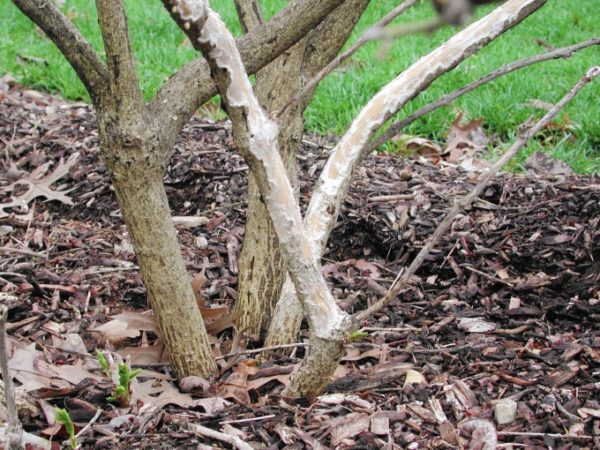
How to recognize animal activity
Animals appear in the garden in order to profit from young shoots and bark before dawn, at night. It’s hard to track them down. The hares have a wonderful ear, they are able to instantly recognize the rustling, see the movement in their direction. After that, the animals quickly run away. The fact that hares visit the garden and cause harm can be found by the characteristic signs of activity:
- young seedlings are almost completely destroyed;
- bark on adult trunks is partially absent;
- undermining, pits are visible in the garden;
- animal feces can be seen in the snow.
Bridge grafting
The use of vaccination with a bridge is fully justified if the trunk is too damaged by rodents. In the last winter months, hares and mice can actively nibble the bark from all sides. If nothing is done, the tree will most likely die.
Preparation of cuttings
Grafting cuttings should be harvested from autumn or early spring. The prepared material can be stored in a refrigerator in a plastic bag by putting a cloth moistened with water inside. If there are many shoots, you can store them in a container of wet sand, sawdust.
A number of recommendations for harvesting cuttings should also be followed:
- the thickness of the scion depends on the degree of damage to the bark.On average, twigs should be 4 mm in diameter. If thick cuttings are needed, they should bend well;
- Oriented by the number of scions should be based on the thickness of the trunk. If buds appear on cuttings before grafting, they should be removed;
- scions can be procured from different varieties of trees. For apple trees, material from wild animals is even suitable;
- the height of the handle should be 10 cm higher than the height of the damage;
- only a clear number of scions can be placed on the bridge, the distance between them is 1-2 diameters of the used cuttings.
Vaccination Procedure
Gardeners are vaccinated with the start of the sap flow process. The bark during this period can easily be separated from the trunk. In most regions, the procedure is carried out in May. Damaged areas by this time significantly dry up, they should be protected from this. It is enough to lubricate the trunk with natural drying oil, garden putty.
Previously, prepare garden equipment: sharpen and disinfect it. Make sharp cuts on both sides of the cuttings. They should not be rough. The cut length should be 4-5 times greater than the diameter of the shank.
The vaccination procedure with the bridge requires care. It is carried out according to a specific procedure:
- the damaged part of the trunk should be cleaned with a sharp knife until it begins to shine;
- gently remove the bark above and below the lesions;
- indent 1-2 cm below the healthy bark;
- make a T-shaped incision with a knife. Repeat the manipulation on the other hand so that the cuts are symmetrical;
- part the edges of the cut bark in different directions;
- bring the prepared cut of the cut inside;
- close the bark;
- to cover with garden varnish from above;
- fasten firmly with a band-aid. The shank should fit snugly to the trunk;
- repeat the manipulation with the second end of the handle.
After completing the scion procedure, tie the barrel with a bast. Wrap a layer of roofing felts on top. Sprinkle with sawdust. The bandage made in the future can not be removed, the urine will gradually overheat. Moreover, the upper layers should not be excessively dense so as not to impede growth. If everything is fixed on top with plastic wrap, it is better to remove it in June-July. Be sure to remove the shoots if they appear from the scion. This year, you need to remove flowers from an apple tree or other tree in order to remove the load from it.
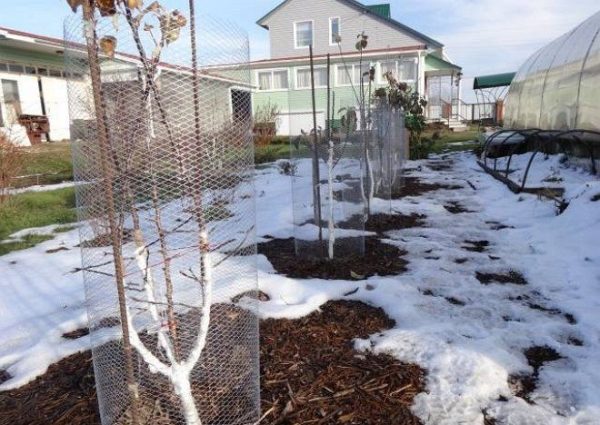
Methods for protecting apple trees from hares and rodents, how to protect your garden
All species of rodents are dangerous for the garden. These small animals can destroy many garden crops. Apple trees are considered their favorite. To protect your trees from hares and other rodents in winter, you can use popular and effective methods.
We clean the garden
Cleaning is the best way to prevent intrusive rodents from invading your garden. It is necessary to remove all fallen leaves, branches, other garbage. All these things serve as an ideal environment for the development of bacteria. Mice hide under the foliage. If the garden is clean, hares will be afraid to go into it, because in the open area they are easy to find. The more open space, the less pests will settle in the garden.
Digging a garden
To protect garden trees from small rodents, you need to dig up the earth to a depth of 40 cm. This method destroys the underground passages of mice. Keep in mind - hares are also capable of undermining. Therefore, digging a plot will complicate their process of penetrating the garden. Land work must be carried out carefully, since it is possible to damage the root system of plantings.
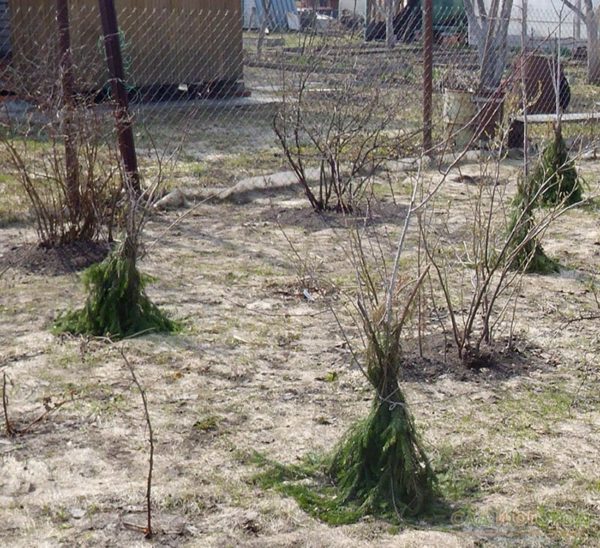
How and what to make fences
Fencing is the best way to protect small apple trees from rodents for the winter. As such, you can use a mesh netting, stone or brick. Wooden fences are not relevant, because animals easily overcome them.It is best to use a fine-mesh metal mesh. It should cover the most problematic areas of the tree. Fences should be up to 130 cm high. They are buried in the ground around the tree to a depth of 30 cm.
How to wrap trees from hares
For many years, gardeners have tried various methods of protecting apple trees from hares in the winter. Spruce branches are the most affordable and effective way. Lapnik is folded in several layers and wrapped around the trunk. It is better that the needles stick out down - animals will prick about them. You need to wind the trunks before the snow appears, after the leaves fall - after the first snow the hares are left without food.
In the spring, the winding is removed - it can contribute to excessive heating of the trunk. As a result, the tree bark cracks due to sudden changes in temperature. To protect garden apple trees and other trees use burlap, parchment paper, nylon tights. If possible, you can put a reed on the trunk - hares do not like it.
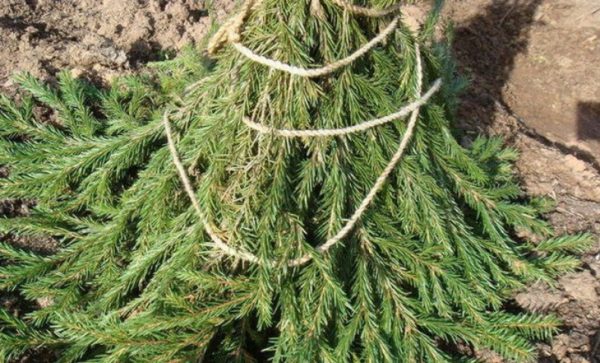
Odor control
Tar, cryolin with limestone mortar are used for wood processing. They have a pungent odor that repels rodents. However, their smell is not very persistent, therefore, sawdust soaked in these odorous substances can be spread around the trunk. As an impregnation, you can use solid oil, kerosene, various oils. They should be used carefully, as they can burn wood.
Singe wool scares off mice. It can be hung on the branches of a tree. You can also use coriander. It needs to be laid out near the seedling. Also, this spice can be planted near the trees.
Using roofing material
Ruberoid is often used to protect wood from mice. However, one must not forget:
- roofing material can close the tree only in winter, in the spring it must be removed. The dark surface is very hot, which is harmful to the bark of seedlings;
- it is necessary to exclude the possibility of prolonged contact, impregnated with resin, material with bark - this will adversely affect the tree.
First, the boom is wrapped with burlap, paper, only then use roofing material. The gap between the windings must be tightly closed. This will help to avoid the accumulation of water, which compresses the seedling when it freezes. With the arrival of the scales, the windings are removed - it is impossible to tighten with this process, such protection prevents the circulation of oxygen.
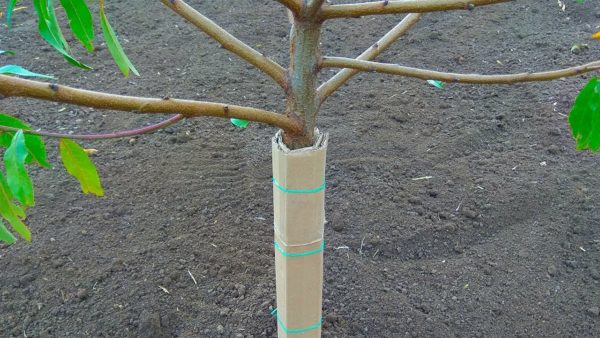
Chemical processing of apple trees
Chemical compositions are effective for protecting apple trees from small rodents in winter, hares. A special whitewash based on copper sulfate is the most common remedy. It is easy to use, and it is not washed away by rains. No less relevant way is the processing of the barrel with black pepper. Special repellents are sold in stores, however, they need to be regularly updated - they are constantly washed off by rainfall. A good alternative to chemical compounds is a solution of manure and clay (1: 1). The smell of this compound repels any pests.
Poison Bait
The use of toxic baits is the most effective way to protect the garden. However, pets are also able to swallow the bait, so use them with extreme caution. Among the many lures, the most effective is "Efa". It is enough for a rodent to eat bait 1-2 times to die. The bait needs to be placed in holes and near trees, periodically updating it. A couple of days after eating, rodents die.
In addition to purchased products, the composition of sugar, vegetable oil, flour and cement will be effective. After eating cement with flour, the animal freezes in the gastrointestinal tract of the animal and leads to its death.
Ultrasound
This is a fairly popular and simple method, however, not the most practical.It requires constant electricity, battery replacement. Sound waves are not able to pass through fences and walls, they act only in a certain radius. If the garden area occupies a large territory, a lot of ultrasonic devices will be required.
Plastic bottles
This is probably the easiest and most affordable method to protect young plantings. For bottles, remove the bottom with the neck, cut it lengthwise and wrap it around the tree trunk. The bottle should not cling too tightly to the stem; moreover, moisture accumulates under the plastic, which leads to decay. It is important to remove such protection in a timely manner, otherwise the trees will be damaged.
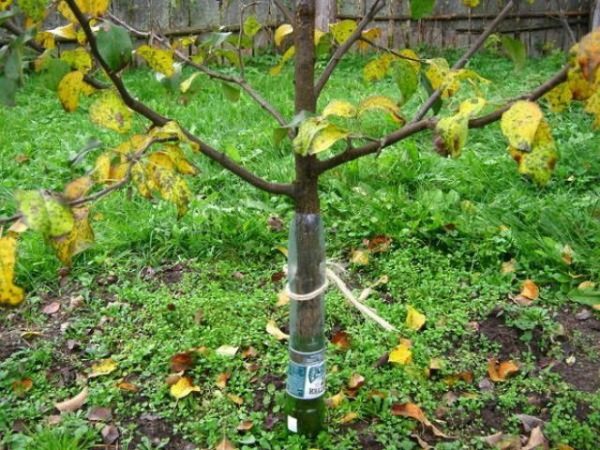
Protecting Creeping Apple Tree
This is a low-growing species of apple trees, which has almost no trunk. For wintering, the tree branches are pressed to the ground as much as possible, fixed with metal pipes, poles. Plastic bottles are dug under the barrel - a poisonous bait is placed in them, holes are made. Such apple trees hibernate under the snow, for additional protection they are covered with special nets.
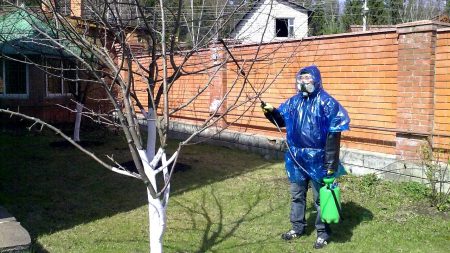 You may be interested in:
You may be interested in:Folk ways
The sharp smell of mint scares off all rodents, so for protection you can use the essential oil and the plant itself. Bunches with mint are applied to the branches, the trunk. Elderberry and marsh rosemary have similar properties. They are also used to scare away mice.
Tamping the ground around the tree can prevent them from moving under the snow cover. Dense frozen ground will not allow the rodent to move freely. It is better to tamp the earth with snow. This contributes to the formation of an ice layer that prevents mice from digging minks and damaging the root system.
Garden treatment: what to do if hares have already eaten trees
Not always used methods and recipes for prevention help damaged trees. Often they are remembered when the bark is already well sharpened by the teeth of rodents. You can save your favorite apple tree or plum if you act quickly, decisively. The damaged area should be carefully treated with a special tool sold in gardening stores.
You can independently prepare a composition for processing, which includes cow dung and clay. After the procedure, to speed up the healing and restoration process, the trunk must be wrapped with nylon, burlap. Of course, timely protection of fruit trees from pests will give greater results, but effective rescue measures must also be applied.
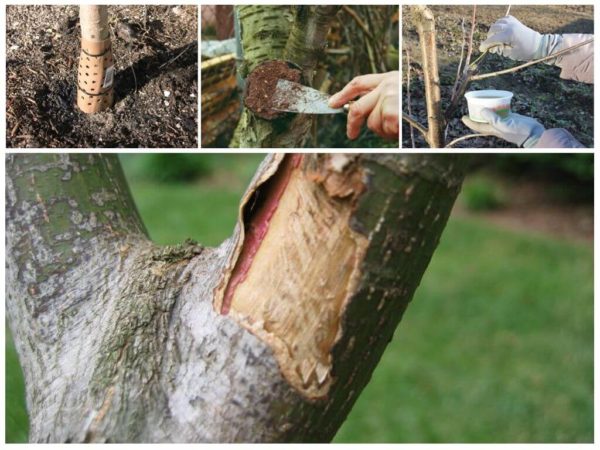
How to save trees from hares and rodents: tips and reviews on ways
Lovers to feast on the bark of fruit trees should be stopped on time so that the garden does not suffer significant or even permanent damage. The easiest way to make a fence around the trees is a metal mesh. Large animals can not overcome the obstacle. The fence from the net can be removed in the spring and left until next year - the investment is profitable and will last a long time.
There is another secret from gardeners. Trunks should be carefully tied with spruce branches, and a little dog hair should be added to the ends of the branches. The characteristic odor will deter pests. Of course, it is worth using the tips of those who regularly have to deal with rodents.
Antonina
I tie the lower part of apple trees and other trees in the garden with spruce branches. From above I bind tapes, which are previously well lubricated with tar. This smell repels mice. In winter, the ribbons can be periodically changed or a little more dog hair added to them. Hares, too, will not approach such a trunk. Cats also help to cope with them. If they walk around the site and mark the territory, then no additional protection may be needed.
Ivan
Young seedlings completely destroyed hares last year.It seemed that all the trees were simply cut by secateurs. In the fall, I decided to prepare for a future invasion, and after I planted new trees, I immediately put on plastic bottles on top. It took a few pieces, but everything is done easily, without effort. In the spring I’ll just take off the bottles. Additionally, he put up a fence made of metal mesh, so that nothing threatens my garden anymore.
Rodents, who come to enjoy young bark in the garden in winter, cause many problems. Trees can die after severe damage. It is better to protect the garden from an unpleasant neighborhood in several ways at once. This will help preserve all plantings and trees without loss of winter, and in season they will delight with a variety of fruits.

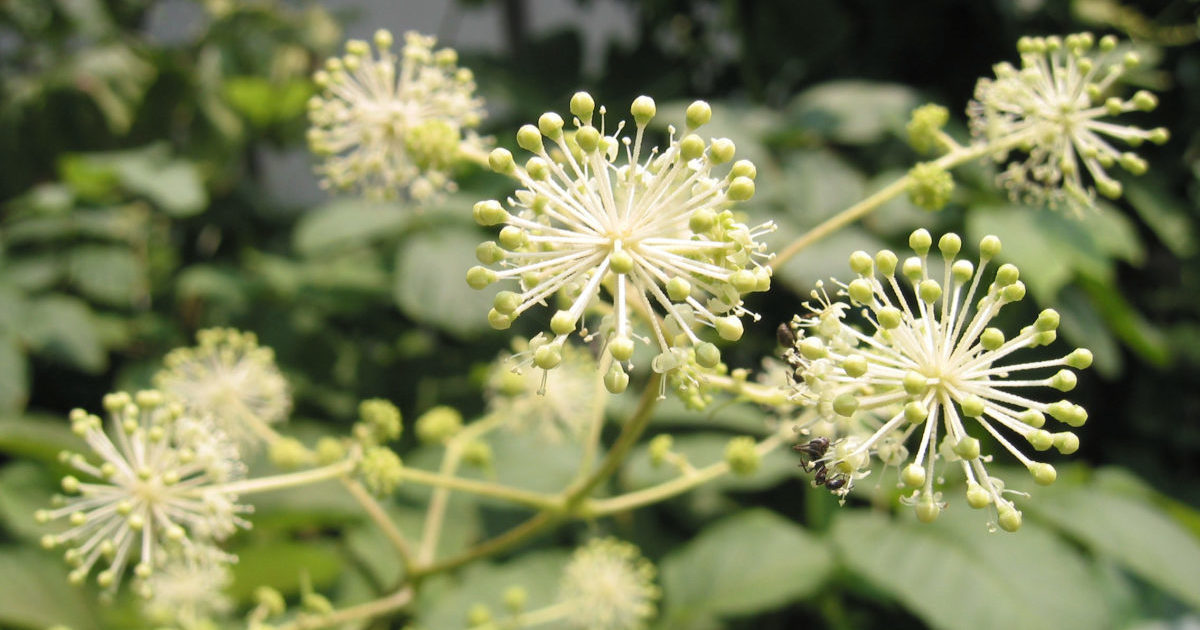 Aralia Manchurian - medicinal properties and contraindications, the use of tinctures in bodybuilding
Aralia Manchurian - medicinal properties and contraindications, the use of tinctures in bodybuilding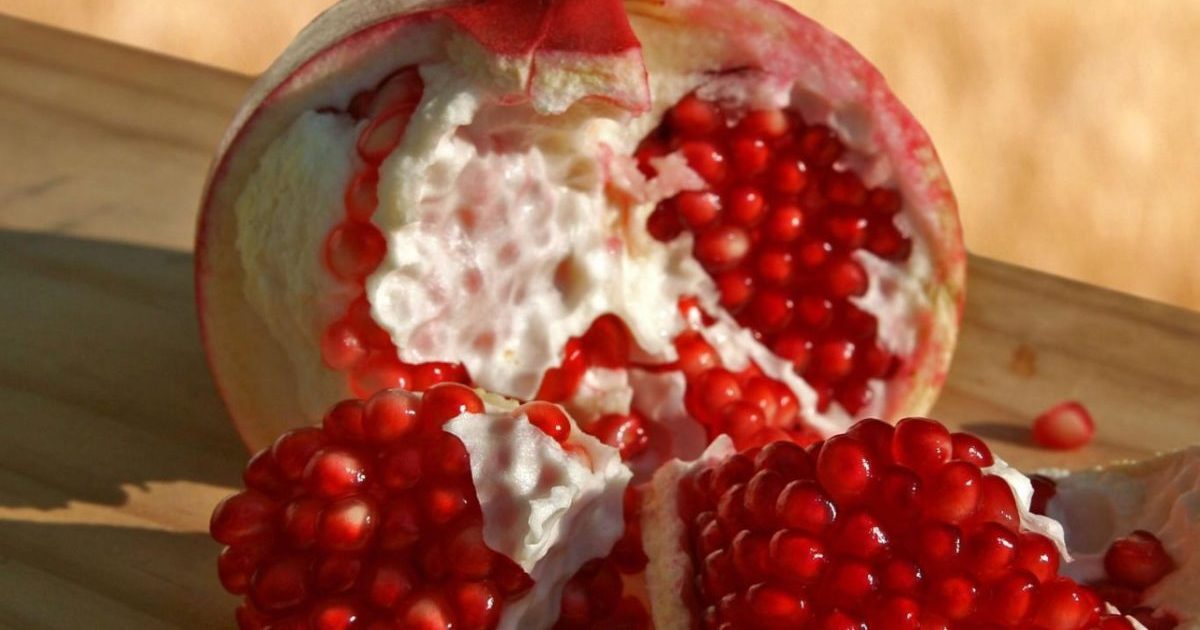 Seedless pomegranate - cutaway appearance, benefits and harms
Seedless pomegranate - cutaway appearance, benefits and harms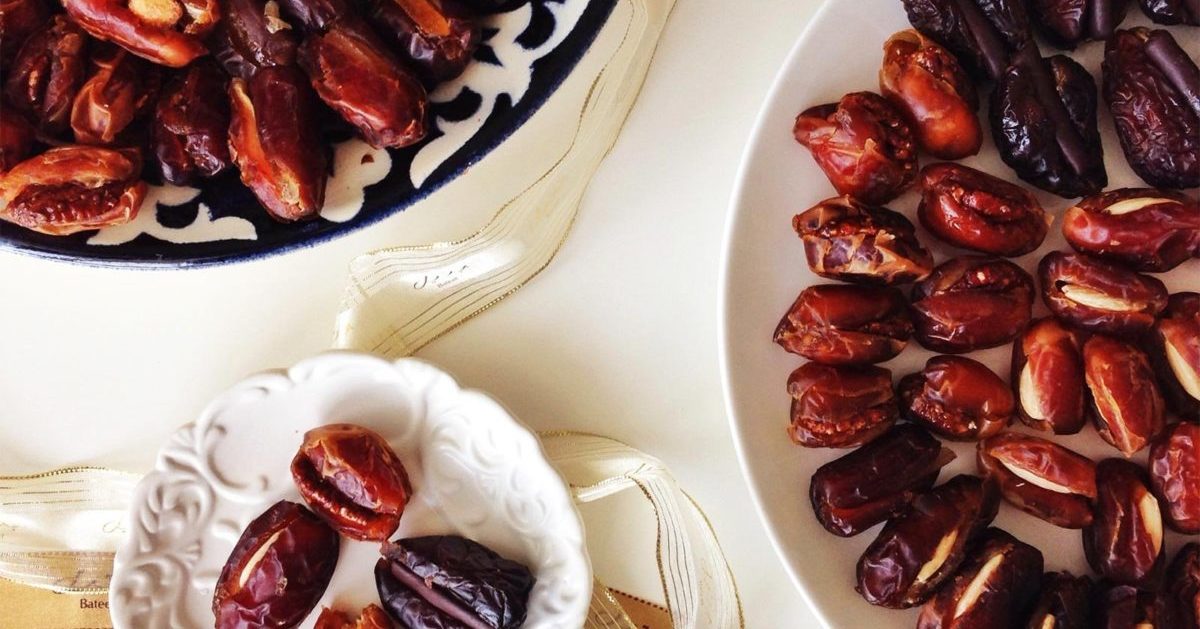 Dates - the benefits and harm to the body, how much you need to eat, properties and calorie content
Dates - the benefits and harm to the body, how much you need to eat, properties and calorie content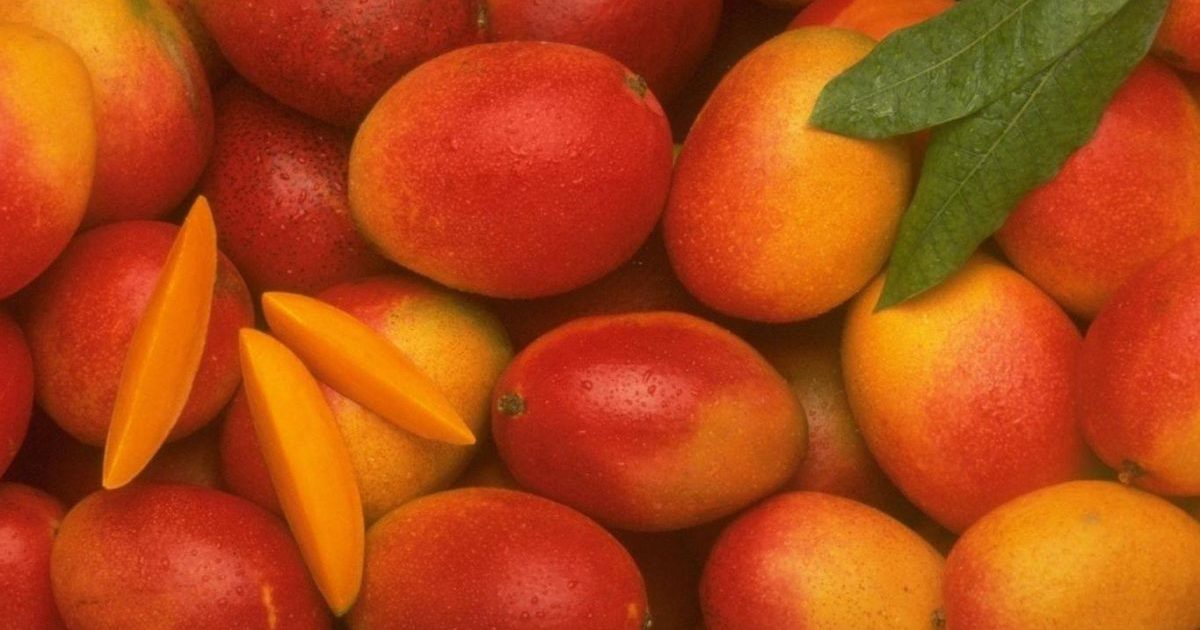 The benefits and harms of mango for the body of women and men - how to eat it?
The benefits and harms of mango for the body of women and men - how to eat it?